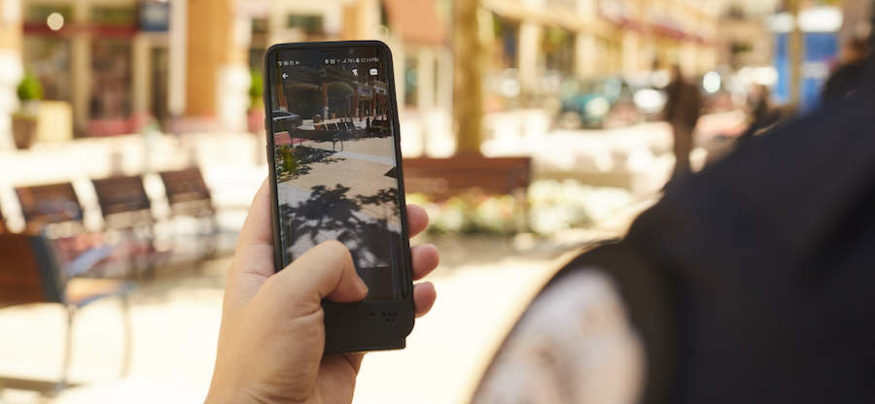A cellular network that meets the unique demands of public safety has finally arrived in the form of PS-LTE.
For decades, public safety personnel have relied on dedicated radio systems to support field operations and ensure the timely sharing of mission-critical information. When radio frequencies became crowded with traffic, many agencies ventured into cellular communications with the introduction of computer-aided dispatch (CAD) systems supported by mobile computers that relied on data carried across commercial wireless networks.
As technology evolved and bandwidth increased, agencies were able to use cellular networks to access greater amounts of data including pictures and, at times, video. This was beyond the capabilities of traditional narrow-band radio networks. However, the migration towards wireless was far from smooth. With smartphone usage proliferating in the general public, cellular networks were prone to clogging, especially during major events or disasters. In essence, the potential was there for public safety, but the capacity of the cellular networks could not reliably support mission-essential operations.
The safety of the public is a basic governmental responsibility and the recognition of the need to prioritize public safety operational capabilities resulted in Congress establishing the First Responder Network Authority in 2012 to provide a variety of benefits to public safety agencies.
A key component of this legislation resulted in what is commonly known as PS-LTE. PS stands for public safety and LTE is short for long-term evolution, which reflects the evolving cellular capabilities in terms of speed and bandwidth. LTE is widely available to the public, whereas PS-LTE is limited to entities involved in public safety operations. Major cellular carriers have committed to providing PS-LTE that will deliver priority and preemption for quality data transmissions. This means that public safety is assured of dedicated bandwidth that is sufficient to support important operations even when there is high network demand.
The benefits of PS-LTE are significant and permit public safety to utilize force-multiplying technology like livestreaming video or accessing large cloud-based files. To better understand the potential, consider the following use cases.
High-Density Special Events
A large sporting event with an attendance approaching 100,000 people is being held on the outskirts of a major city. Many of those in attendance are using smartphones to post live video to social media platforms. Others are sending selfies to friends and family.
The police department responsible for event security has set up more than 30 strategically placed video cameras that are either statically monitoring sensitive areas or scanning for problems. All cameras are connected and controlled using a PS-LTE cellular network that ensures adequate bandwidth for reliable operation. The cameras are simultaneously streaming video to two command centers, one in a large trailer in the parking lot and a second at police headquarters.
Having two command centers provides both backup capability and an opportunity to share responsibilities, effectively letting personnel in separate locations provide assistance or relief as needed. In addition to the command centers, officers who are patrolling the event can view video from the cameras using their issued smartphones.
While those attending the event are experiencing slow transmission speeds or no service at all, police personnel can control their cameras and view events at high resolution in real time because they’re supported by a PS-LTE network.
Special Operations
When a suspicious package is spotted at a busy bus terminal, the first officer on scene determines an evacuation is warranted and requests a supervisor and the call-out of bomb personnel. The officer uses a smartphone to take several high-resolution pictures of the package and sends them to the responding bomb techs.
When the supervisor arrives on the scene, she uses her smartphone to access a cloud database that has hundreds of detailed diagrams of critical infrastructure, including a layout of the expansive bus terminal. The supervisor determines key posts to facilitate evacuation and places marks on the downloaded diagram, then captures a screenshot and pushes it out to responding officers, all of whom are equipped with smartphones. The supervisor can confirm officers go to the proper position because the phones provide real-time location updates.
Mobilizing Law Enforcement
Plan and implement a mobile initiative at your agency with this practical roadmap. Download Now
Once on scene, the bomb techs use a specialized scanning unit that transmits the resulting image to their smartphone. The contents look like an improvised explosive, and one of the techs recalls having seen a bulletin on a similar device. The tech uses his smartphone to access the cloud-based files of classified bulletins and then conducts a video chat with the specialist who wrote the bulletin. He also sends a video of the device showing all angles and the surrounding area.
Throughout this incident, officers are able to leverage a PS-LTE network that supports the transfer of high-resolution photos and video as well as pulling detailed documents from a secure cloud-based server.
Transmitting Aerial Video/Situational Awareness
Shortly after a vehicle pursuit begins, a police helicopter is overhead and providing live video to a police supervisor. Despite being miles away from the pursuit itself, the supervisor has responsibility for making the decision as to whether the pursuit should be terminated. Because the supervisor can see that traffic is light and the risk is minimal, the pursuit is allowed to continue.
The commander continues to monitor the pursuit real-time and follows it to its conclusion. The live transmission of high-resolution video is made possible by PS-LTE.
Empowering First Responders
Traditional public safety communication networks support voice transmissions and data rates that are usually limited to text or very low-resolution images. PS-LTE can quickly transfer high volumes of data, allowing for the transmission of high-quality images and video, as well as supporting detailed geographical overlays for managing an evolving incident.
PS-LTE supports force-multiplying technology that allows public safety agencies to perform complex operations with a higher level of effectiveness and safety through improved situational awareness. Perhaps most important to public safety, PS-LTE provides an assurance of reliable, high-quality transmission that is given priority over regular cellular data, and when necessary, preemption ensures adequate bandwidth for priority operations.
Learn more about the public safety technology that’s improving officer safety and access to information.









